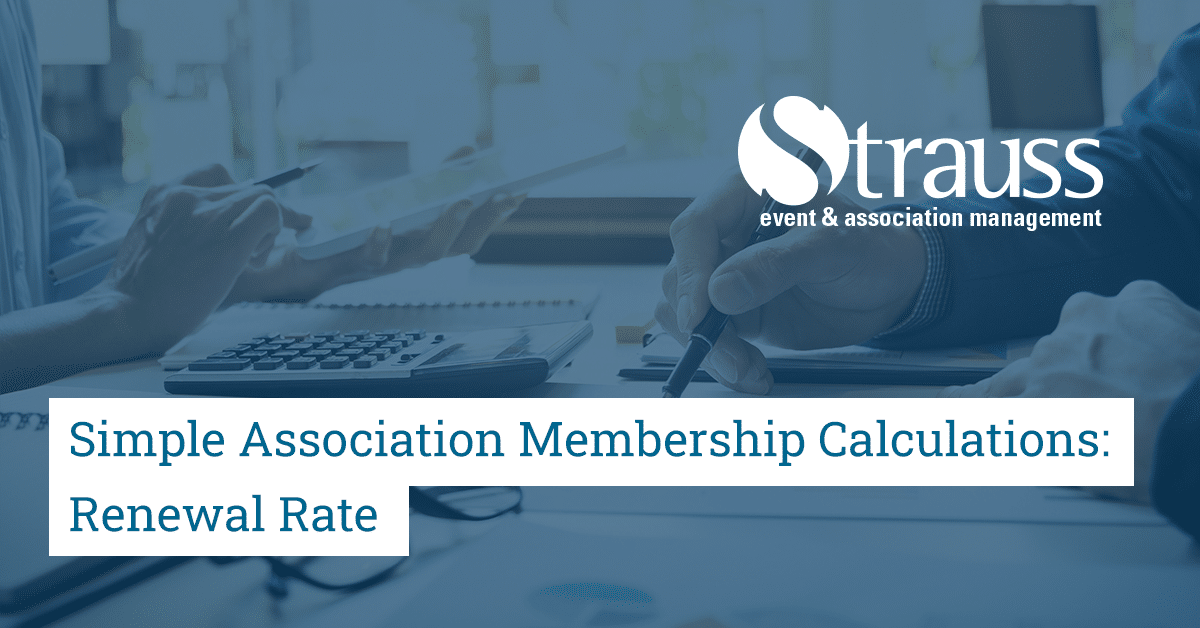One of the biggest indicators of an association’s health and longevity is their member renewal rate. A member renewal rate is the measurement of the number of members over a given period, usually during a fiscal or calendar year. A high renewal rate demonstrates members are engaged and your association is providing value to its members. Knowing your member renewal rate is important for a multitude of reasons, as outlined below with a straightforward, foolproof formula to calculate your member renewal rate.
The importance of your Member Renewal Rate
Your member renewal rate is a unique and vital measurement of your association’s health for the following reasons:
The higher your renewal rate, the better the return on your investment made through your member acquisition cost. The investment made through your marketing and recruitment efforts bears a cost and retaining your members is in every association’s financial health benefit. Therefore, the longer you can keep your members, the higher yield you receive from your investment.
Your member renewal rate is, perhaps most importantly, a signal to your association for any areas of improvement or potential areas for innovation. It is often said happier members equate to more members; therefore, your renewal rate can be a useful tool to assess the overall happiness and satisfaction of your members. It also illustrates an area your association can turn the course in if areas of dissatisfaction present themselves. Additionally, longer membership rates correlate to stronger relationships among members and the association itself. Consequently, your retention rate can be seen as a representation of membership satisfaction and illuminate areas of member dissatisfaction that can be rectified thus further improving the quality of your association.
Calculating your Member Renewal Rate
The calculation of your Member Renewal rate can be done in five straightforward steps listed below. Though more complicated formulas exist, a reliant and basic formula is:
((ME-MN)/MS) x100
In this calculation,
- ME=Members at the end of a period of time
- MN=Members acquired during a period of time.
- MS=Members at the start of a period of time.
1. Choose an interval of time.
Your first step is detecting the time period you would like to focus on. The time period can vary depending on what you need but can be calculated annually, quarterly or even monthly.
2. Check how many members you had at the end of said time period.
The second step is to ascertain how many members you had at the end of the time period. If you calculate your annual retention rate from the previous year, you would locate your total number of members at the end of the year. This number stands for ME in the formula.
3. Identify the number of new members obtained during this time period.
The third step is to pinpoint how many new members were recruited during the time period. If you are performing an annual calculation, you will locate the total number of new members from the past year. This number represents MN in your formula.
4. Pinpoint how many members you had at the beginning of the time period.
The last figure you need to know is how many members you had at the beginning of the period in question. In keeping with the annual example, you would identify the number of members you had at the start of the year. This number denotes MS in the formula.
5. Run the equation.
At this point, you are ready to perform your equation. It can be completed by first subtracting your MN number from your ME number (ME-MN). For your next calculation, you will take the solution from (ME-MN) and divide it by MS. Lastly, you will multiply this number by 100 to turn it into a percentage. The final total is your member retention rate for your selected time period.
Here is a fictional example:
I am calculating the annual retention rate for my association. At the end of year, we had 190 members (ME), we recruited 15 new members (MN) and started the year with 195 members (MS). The solution to find our member retention rate is as follows:
((ME-MN)/MS) x100
(190-15) =175
175\195=0.8974
.08974×100=89.74% retention rate
The percentage you are aiming for will be unique to your association depending on your goals and financial metrics. As a rule of thumb, anything higher than 75% signals a strong retention suggesting members are more likely to stay in the long run.
In closing, your association’s member renewal rate is a vital metric to gauge the happiness and overall condition of their membership. It can also be used as a tool to illuminate areas of improvement and opportunities to further elevate their member renewal rate.
Learn more about association membership:

